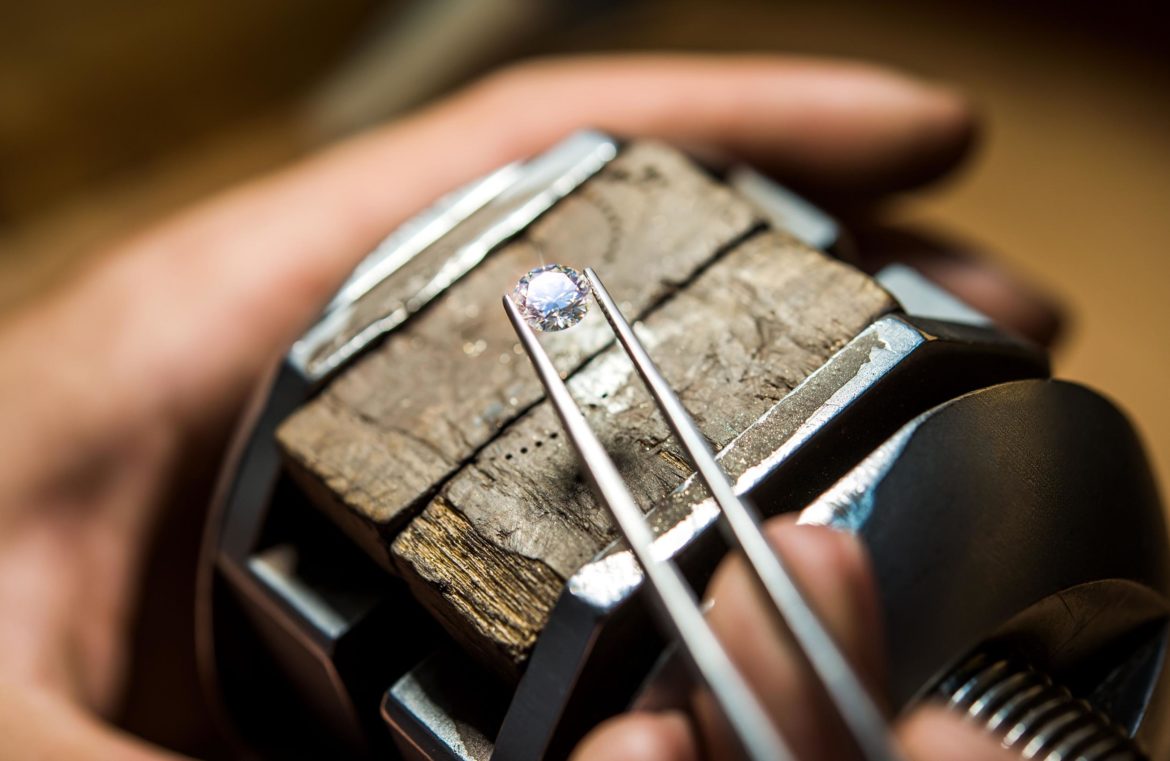How to Find a Lost Diamond
On our 25th anniversary I looked down at my wedding rings and discovered that I’d lost my center diamond solitaire. If you’ve ever had this experience you know the sickening feeling that immediately grips your stomach. Read on to learn how to find a lost diamond.
It’s similar to learning that someone you love passed away, and it’s followed by panic and an intense desire and need to start searching high and low for what had become and extension of your hand–a part of you. But where do you even begin? It’s so tiny. It could be anywhere. And is it even possible to find it?
Yes. You can. So first, take a deep breath and blow it out slowly. Then take these steps.
- Grab a notebook and write down everything you’ve done in the past day. Why just the past day? Because believe it or not you look at that diamond often. You more than likely lost it within a few hours of when you discovered it missing. So write down every. single. detail. of what you’ve done. Showered? Started a load of laundry? Put leftover pizza in the oven? Worked out? Write it all down. Then begin tracing your steps in reverse order.
- Starting where you were last begin by thinking about where you may have snagged the prongs. Look at the prongs. Is there fuzz of any sort? If there is can you tell where it came from? Is it a certain color? Common places to snag a prong:
- MOST COMMONLY, the laundry (check in the laundry piles, inside baskets, washing machine, dryer, and in the lint traps)
inside oven mitts
inside pockets
blankets/sheets (or under the bed if it’s fallen out of the blankets)
inside socks or other clothing like children’s feet pajamas
towels
in the couch
Knitter or crafter? Check in your yarn or supplies.
in the car. Look both in the seating areas and in the cargo area.
inside bags. check those bags before you throw them away!
in the soil if you’ve gardened (See below for a suggested method for this type of search) - Next look all around upper (non-floor) areas where you’ve been. Look in the oven. Look in the refrigerator. Look in every little crevice. You’d be surprised where a diamond can fall and/or bounce into. I read one instance where the lost diamond was found in a bag of lunch meat in the fridge!
- Once you’ve checked the common snag areas and upper areas like counter tops, begin looking on the floor. First with your naked eyes. Don’t see it? Maybe you’ll hear it. Grab any metal rod type of thing. I used the handle from my Swiffer Sweeper…removed the head first. Lay it flat on the floor then sweep it back and forth on the floor/carpet. Anything hard on the floor will make a clinking noise on the metal.
- Next grab a flashlight and try shining it across the floor and into any crevices near the baseboards or heaters, etc. The light might catch the facets and sparkle out from your diamond’s hiding place.
- If those search methods didn’t work, grab the vacuum, take out the bag. Put in a new bag. TURN OFF THE BEATER BAR mechanism so that you don’t damage your diamond! and vacuum thoroughly. After you’ve vacuumed all areas in all rooms where the diamond might be you will cut open that bag and sift through the contents very carefully. Alternatively you can also put a nylon stocking on the end of the hose to try to catch the diamond there, but if you have dust bunnies under and around the furniture, that’s more of a challenge than it sounds!
- Next check sink traps and shower drains.
- Have you looked in your computer keyboard?
- If you’ve lost it outside, first, avoid walking in the suspected areas as much as possible. Once you step on it, you could push it into the soil. Instead work from the outside in, in grid fashion. Check one square foot at a time. If it’s grass, grab scissors and cut the grass as short as possible as you search. This will make it easier to see the diamond, and it’ll also help you know where you’ve already searched.
- If you’ve lost it in garden soil, sift it. One bucket-full at a time. Through a screen.
- If you’ve lost it in the pool, plan a “Search and Rescue” Party. Offer margaritas to your friends who come to help you search the pool. Under water flashlights like they use in scuba diving are helpful if you can find one.
- Check inside the hot tub.
- As awful as this sounds, check the dog poop. They like to eat things like that.
If you suspect you lost it in public, notify the management of any public place you visited. And post a lost & found ad. Did you know that in many areas anyone who finds it has a responsibility to attempt to find the owner or otherwise face criminal charges if they are found to possess the diamond later? It’s true. So post an ad. Post on Facebook. If it’s a diamond that’s been in your family for a long time, you might even get the news to feature your story.
If all this proves fruitless, do not lose hope. I found mine in a place I never thought to look–in a basket of laundry I’d washed, dried, and folded a few days BEFORE I lost my diamond. I had completely forgotten that I’d stuck my hand into the bottom of that basket to pull a sports bra out for my workout. I found it days after my search ended. I emptied the basket by then and the diamond was sitting at the bottom. I only found it when I moved the basket and heard what sounded like a pebble rolling around the bottom of it.There are many stories of people who have discovered their diamond in the least expected places many days or even weeks later. So don’t lose hope.
After I found it, I learned a lot from my jeweler about why so many people lose diamonds in the first place. Having this information is helpful in avoiding a loss in the future. He also gave me pointers for the event that I ever do lose it and can’t find it.
- Very often rings are sold with prongs that are far too thin in the first place. The ring manufacturer sometimes uses the least amount of gold possible in order to keep the price down. If you’ve acquired a new diamond, you should have it inspected and appraised at a reputable jeweler as soon as possible to check for problems like this.
- The prongs of our rings are almost always made of soft metals like gold. These metals wear down a bit every day that we wear them. Over time they get thinner and thinner and eventually are able to bend and snap easily.
- Excessive polishing speeds up wear and tear
- If you’ve had your ring sized more than one size up or down, the original angle of the prongs is altered creating more of a gap around the diamond.
- Vibration cleaners or Steam cleaners with high-speed jets can jar diamonds loose.
To avoid losing a diamond in the first place, plan to stop in at your jeweler not less than every six months for them to inspect and clean your ring. They can fix loose prongs or replace worn prongs before you have a problem. Between visits to your jeweler, look at your ring often. If it’s been getting snagged on things a lot more than usual, there’s a problem that you may not be able to see with the naked eye. Bring it in. If you hear it jiggling, there’s a problem. Bring it in. Most small repairs can be done for free or up to $50. If you ever need the entire head of your ring replaced (like I did), that’s relatively inexpensive too considering they are replacing gold or platinum in most cases. Mine was $160. including labor.
REMOVE your rings when you shower or take part in any heavy activity. Keep them in a designated ring keeper (not loose on the counter where they can get swept up with the trash.)
And finally, check into insurance. Often times the jeweler you purchased the ring from will offer free lifetime insurance as long as you bring the ring in for regular check ups. You can also add an insurance rider to your homeowners insurance. (But be aware of the particulars. Some only cover complete loss of the entire ring, not just a stone.) Most insurance riders can be obtained for $100-$400 dollars.




